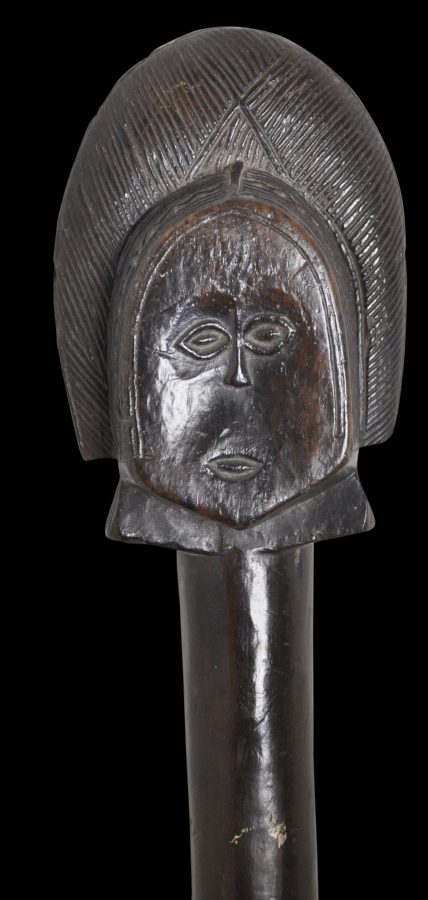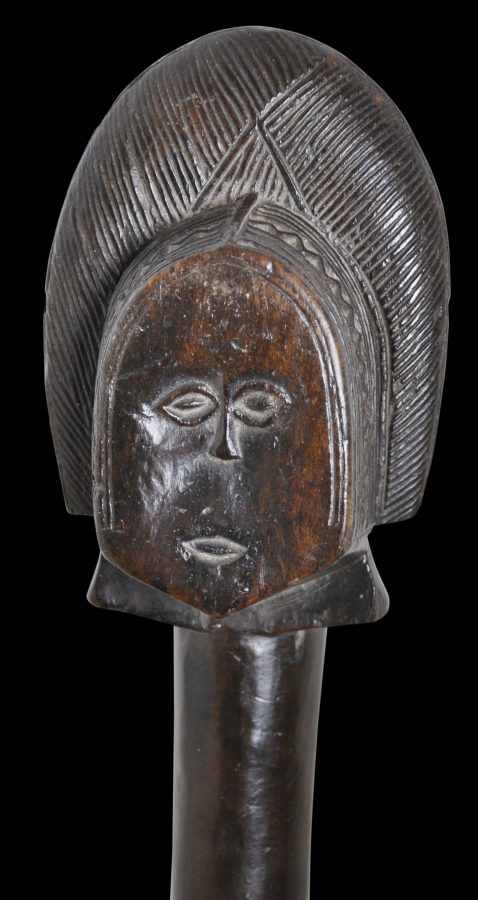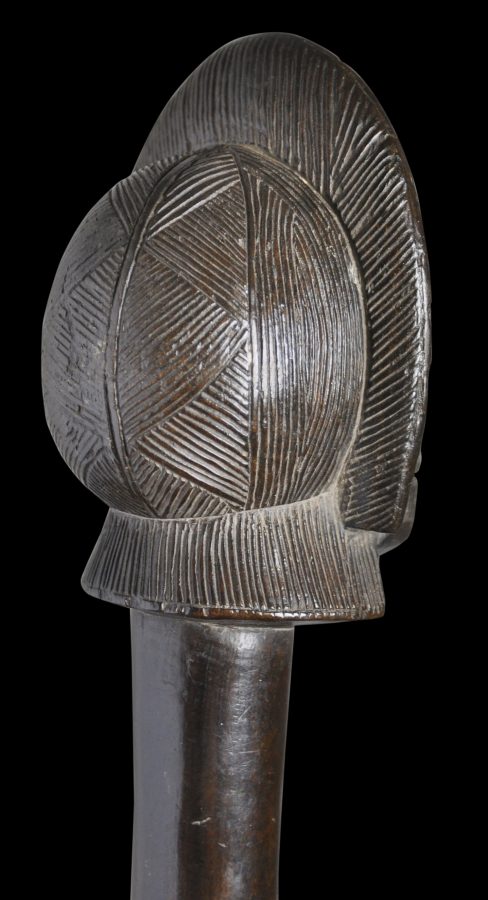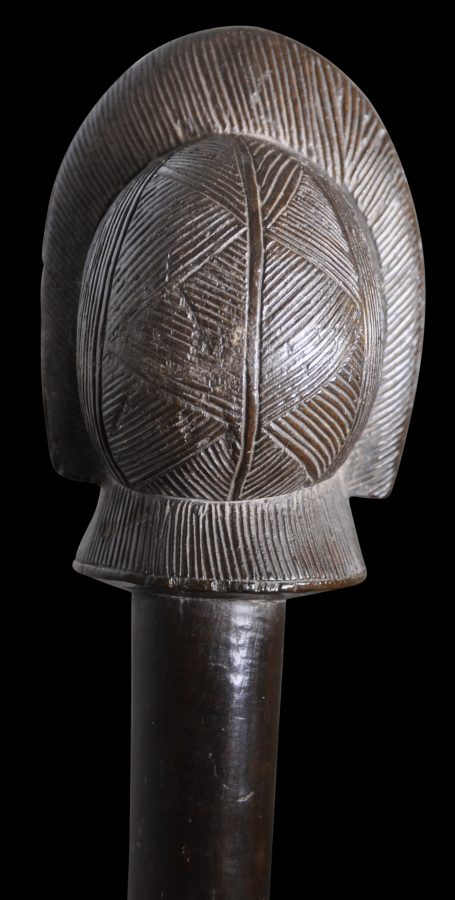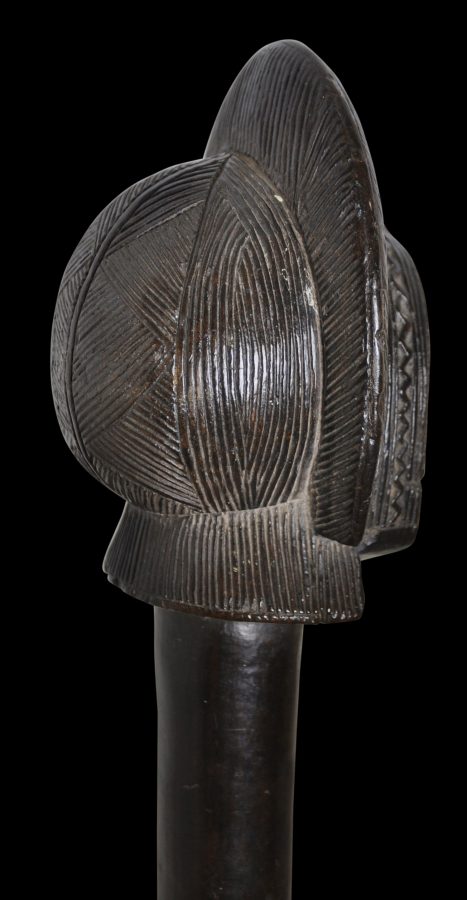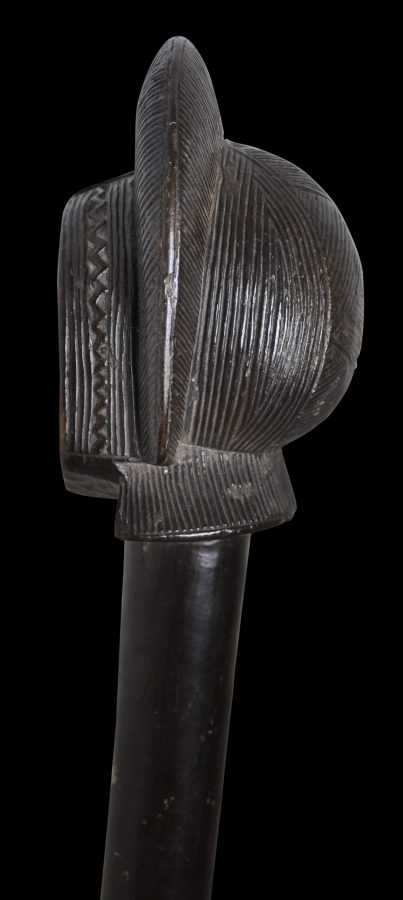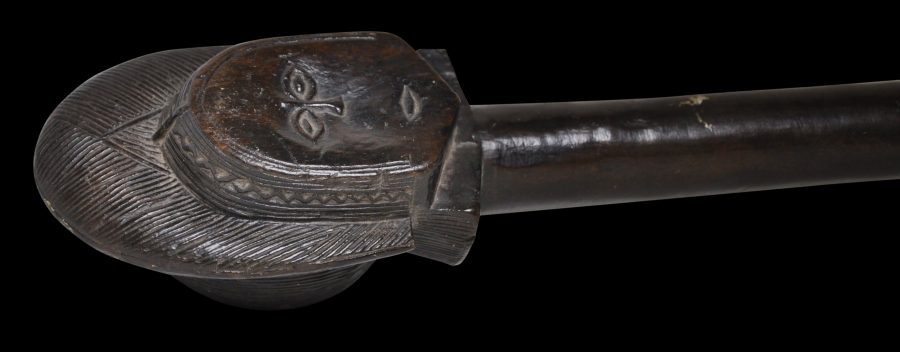Enquiry about object: 4516
Carved Wooden Prestige Sceptre
Ovimbundu People, Angola 19th century
length: 55cm
Provenance
UK art market
This fine and well-carved privilege sceptre has a deep, glossy patina: its age is very clear.
It has been carved from a single dark wood and has, as its finial, a well-rendered female head with a well-carved headdress.
The head demonstrates all the traits of the idealised Ovimbundu woman’s face: prominent eyes, a fine nose and a slightly gaping mouth. Her facial expression is simple, stylised and yet elegant.
The eyes are characteristically elliptical as is the prominent forehead. Such a prominent forehead suggests intelligence, thoughtfulness and sensibility.
The face is separated from the coiffure by a finely incised fringe. This fringe is incised with zig-zag motifs. Such motifs are common in Ovimbundu coiffure carving.
The coiffure is both high and highly detailed. It rises from the top of the forehead and sweeps back dramatically. The back is decorated with bands of zig-zags.
The form of the coiffure may be based in part on that of a colonial Portuguese or European woman. The Ovimbundu were one of the few tribes exposed to the Europeans by the early nineteenth century due to their proximity to trade routes.
Ovimbundu carvers have over the years incorporated European hairstyles into their carving’s aesthetic traits.
Such sceptres were prestigious items owned by Ovimbundu chiefs in what is now Angola. Typically such sceptres were presented to the sons of chiefs during their transition to adulthood.
The example here is free of chips and restoration. There are minor-age related scuffs but the patina is glossy and incontrovertible.
The Ovimbundu are a Bantu-speaking ethnic group living in southern Angola, which comprises over 20 indigenous chiefdoms. The Ovimbundu were the main coastal link to the Portuguese-sponsored trade routes with Central Africa. The merchants and chiefs became wealthy through this trade and would often commission objects of art to illustrate their political and financial status. The authority of an Ovimbundu chief was not hereditary – a council elected a sovereign, but he was chosen only from among the members of the royal clan.
References
Bacquart, J. B., The Tribal Arts of Africa, Thames & Hudson, 1998.
Ginzberg, M., African Forms, Skira editore, 2000.
Pethica, T., Klopper, S. & Nettleton, A., The Art of Southern Africa: The Terence Pethica Collection, 5 Continents, 2007.
Robbins, W. M. and Nooter, N. I., African Art in American Collections, Smithsonian Institution, 1989.


